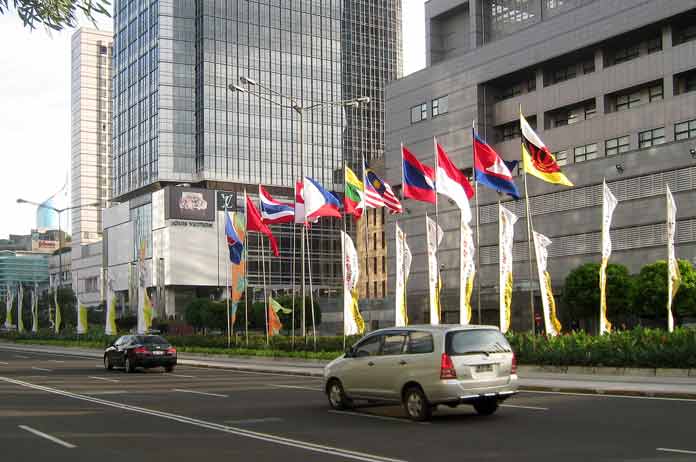Implementing ASEAN Standards

As ASEAN moves closer to single market integration, its member states are looking for ways to create a unified tourism market rather than ten competing industries. This strategy is aimed at growing tourism’s contribution to regional GDP from 12 to 15% under ASEAN’s Tourism Strategic Plan for 2016- 2023. The plan calls for all ten countries to work together and market ASEAN as a single destination, with the aim of keeping tourists in the region for 8 nights, up from the current average of 6.3, and spending $1500 per visit, up from $833. It also calls for expanding the tourism industry into an “inclusive”, “green”, and “knowledge-based” sector.
To encourage citizens to visit neighbouring countries and bump up regional tourism, ASEAN is also planning “Visit ASEAN” year in 2017 to mark the fiftieth anniversary of the regional bloc. In Cambodia, Vietnamese and Thai nationals are two of the top categories of visitors, but many just cross the border for work or employment so aren’t really tourists in the traditional sense. ASEAN Visit Year, however, encourages Cambodia to target middle-class visitors from these countries who might stay for several days.
Single visa system
As tourists continue to venture outside the “big three” of Thailand, Malaysia, and Singapore, trips that stop in several countries – such as Cambodia and Laos in addition to Thailand – have proven to be extremely popular. While many backpackers are already following this route, a single ASEAN tourist visa, which is currently in the works, would considerably help logistics and follow the lead of the European Union’s successful Schengen visa. “With the single visa programme, tourism growth will hopefully be significant. This scheme should also benefit non-ASEAN nationals visiting Cambodia and the region,” says Noel Furrer, General Manager and Creator of SUN & MOON, Urban Hotel in Phnom Penh.

Changes in visa regulations to allow professionals to move between ASEAN states would also help Cambodia’s economy and tourism industry, allowing for more competition and skill-sharing. “With the introduction of opportunities for other ASEAN country nationals to work and compete for jobs, local industry professionals and organizations will need to enhance their skill and experience in order to secure positions in the new economies,” he says.
Open Skies Policy
Another logistical component of ASEAN’s tourism strategy is its Open Skies Policy, which came into force at the start of this year, although several states still need to sign it. The policy is intended to liberalise the aviation industry by removing regulations on the “frequency and capacity of flights between international airports across the 10 ASEAN member countries”, according to the business news site ASEAN Briefing. For tourists, this should mean lower ticket prices, more direct flights and, with more competition, better service. Arnaud Darc, Founder and CEO of Thalias hospitality group believes this development will have a beneficial impact on Cambodia.
“The ASEAN Open Skies Policy, which is a component of ASEAN’s economic integration, is an important initiative as it will boost regional air transport connectivity and facilitate the movement of people. At the national level, the launch of flights between Siem Reap, Phnom Penh and Sihanoukville has contributed to shorten the distance between those main tourist destinations,” he states. “Currently, Bangkok and Ho Chi Minh International Airports are the main gateways for tourists coming to visit Cambodia, but we hope to see sustainable direct routes from Europe to allow international tourists to reach Cambodia without having to stop in neighboring countries,” he also says.
Employees to hospitality professionals
Carrol Sahaidak-Beaver, Executive Director of the Cambodia Hotel Association, encourages the tourism industry to make use of ASEAN’s Mutual Recognition Arrangement on Tourism Professionals, which sets out guidelines for how to train and evaluate staff. While the industry employs thousands of people, most employees learn on site; for Cambodia to stay competitive it’s important to develop these employees into true hospitality professionals. “Many Cambodians – both the youth and their parents – look at work in the tourism and hospitality industry as a last resort, last choice,” says Sahaidak-Beaver. “Now with the ASEAN Training Standards, people can be professionally accredited by a certification process that is recognized internationally. This is huge for us.”
The guidelines identify which skills are needed to be considered a professional in specific areas of tourism and hospitality, according to Sahaidak-Beaver, with training modules that can be used to improve staff performance. She also recommends that hotels and restaurants adopt “loyalty packages” to keep skilled staff and reward those who take the time to improve their skill levels. Nick Ray, Company Advisor of Hanuman Travel in Phnom Penh, however, says Cambodia is already doing some things better than its neighbours. “One competitive advantage Cambodia has over some of its neighbours is the level of English spoken across the country. This is not just confined to the tourism centres but is common across the urban areas of Cambodia,” says Ray. “Another big advantage Cambodia has is the warmth and openness of the people and this is an intangible asset.”

Cambodia’s tourism industry only looks to expand further, but ensuring sustainable growth will require further investment in its employees and destinations. But given the country’s relatively new industry, which started to draw international tourists en masse only around 2000, it should also be proud of its great achievements.